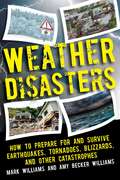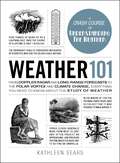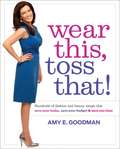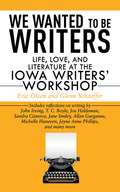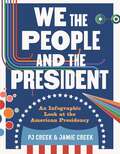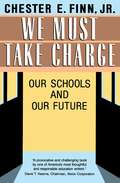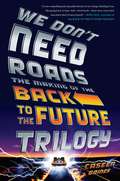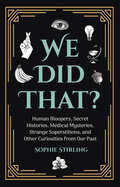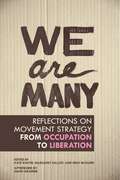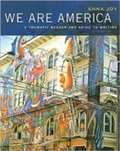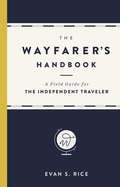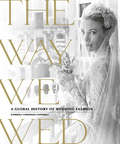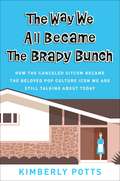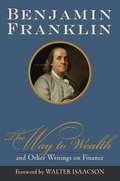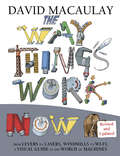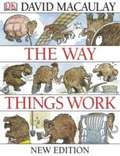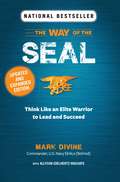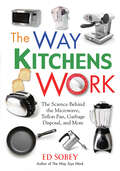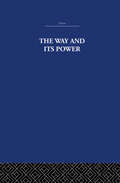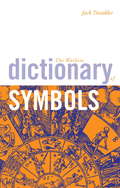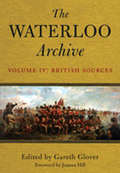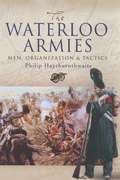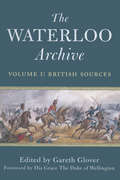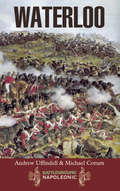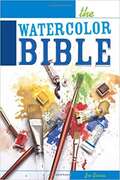- Table View
- List View
Weather Disasters: How to Prepare For and Survive Earthquakes, Tornadoes, Blizzards, and Other Catastrophes
by Mark D. Williams Amy Becker WilliamsFloods. Blizzards. Landslides. Earthquakes. Tornadoes. Hurricanes. Severe weather happens every day across the globe. We see and hear of the devastating consequences whenever we tune into the evening news: property ravaged, communities destroyed, and lives lost. But although these events are unstoppable, you can prepare. In Weather Disasters, veteran authors and disaster survivors Mark and Amy Williams provide vital information on prepping for and surviving every major type of weather disaster. Each chapter is devoted to a different catastrophe, and lists: The science behind the catastrophe Essentials you’ll need to get through it Helpful prepping tips Statistics behind the disaster Resources to reach out to for help What to do in the aftermath No matter who you are or where you live, catastrophe can strike at any time. Be prepared, and pick up Weather Disasters today!
Weather 101: From Doppler Radar and Long-Range Forecasts to the Polar Vortex and Climate Change, Everything You Need to Know about the Study of Weather
by Kathleen SearsLearn the science behind weather and weather prediction in this clear and straightforward new guide.Weather is everywhere, and while it’s typically not thought about most of the time, it can get everyone’s attention in an instant—whether it’s the swirling destruction of a tornado, the wreckage from a hurricane, or the havoc of climate change on the environment. Weather 101 gives you the basics on weather, from blue skies to hail to dust storms, with information on the science of how weather works, how to predict the weather in your area, how to be ready for natural disasters, and how climate change is affecting weather patterns across the world. With this guide, you’ll be a weather expert in no time!
Wear This, Toss That!
by Amy E. GoodmanIt costs us not to look our best! Dressing poorly costs us interviews, first impressions, money . . . and a whole lot more. But you can look good all the time, asserts Amy E. Goodman, the magazine maven and style expert who's a regular on NBC's Today show. Her one-stop fashion and beauty book cuts through the information overload to teach you how to dress to impress whatever your age, lifestyle, or size--while staying true to yourself and your budget. Who can afford clothes and makeup that don't fit or flatter? Since every piece needs to count, Amy uses snappy, clear comparisons to show how to regain control of your wardrobe and beauty shelf by simplifying your choices. Cleverly organized like a woman's closet, wear this, toss that! outlines the 30 pieces of clothing and 30 accessories plus beauty basics every woman must own. Then Amy builds beyond the essentials, walking you through your closet, rack by rack, shelf by shelf, and drawer by drawer, telling you what to wear and what to toss. By sorting through the items you already have and taking inventory of what you need, you can build upon what you own and finally create the winning total look you've always dreamed of! Amy provides immediate style answers for real women: * 700 wear/toss items * Over 1,000 product suggestions * You-heard-it-here-first steals and deals * On-sale items to avoid regardless of price * Styling tips for every body type * The ultimate shoe guide: you'll never question which footwear is right again! * 24 "save-me" products to rescue you from any fashion emergency Filled with candid tips from pro stylists and designers, along with Amy's unfiltered guidance, wear this, toss that! will inspire you to invest in yourself, shake off the wardrobe blahs, and wake up your looks from head to toe. Step into your closet. Do you have: A ruffled tank that sweetly frames your faceor a blouse with overpowering ruffles? A long cardigan that graces over your curves or a super drapey wrap that resembles a blanket? A pencil skirt that lands just above your knees or a bell skirt that bunches at your middle? A cropped, straight-leg pant with a flat front or wrinkled, baggy cargo pants? A shade of red lipstick that says "bombshell" or one that's says "I'm trying too hard"? If any of these questions make you cringe, then wear this, toss that! is your go-to guide. It's for women of any size, age, or lifestyle who realize they just don't like the clothes, accessories, or makeup they're wearing and want to make a change. Almost instantly you'll learn what works, what's got to go, and why.
We Wanted to Be Writers: Life, Love, and Literature at the Iowa Writers' Workshop
by Glenn Schaeffer Bill Manhire Eric OlsenWe Wanted to be Writers is a rollicking and insightful blend of original interviews, commentary, advice, gossip, anecdotes, analyses, history, and asides with nearly thirty graduates and teachers at the now legendary Iowa Writers' Workshop between 1974 and 1978. Among the talents that emerged in those years-writing, criticizing, drinking, and debating in the classrooms and barrooms of Iowa City-were the younger versions of writers who became John Irving, Jane Smiley, T. C. Boyle, Michelle Huneven, Allan Gurganus, Sandra Cisneros, Jayne Anne Phillips, Jennie Fields, Joy Harjo, Joe Haldeman, and many others. It is chock full of insights and a treasure trove of inspiration for all writers, readers, history lovers, and anyone who ever wanted to be a writer. Jane Smiley on the Iowa writers' workshop: In that period, the teachers tended to be men of a certain age, with the idea that competition was somehow the key-the Norman Mailer period. The story was that if you disagreed with Norman, or gave him a bad review, he'd punch you in the nose. You were supposed to get in fights in restaurants. T. C. Boyle on his short story Drowning: I got $25 for it, which was wonderful . . . You know, getting $25 for the product of your own brain? You could buy a lot of beer in Iowa City back then for that.
We the People and the President: An Infographic Look at the American Presidency
by PJ Creek Jamie Creek*A 2022 Notable Social Studies Trade Book*Perfect for reluctant readers, and anyone interested in American history, We the People and the President offers a glimpse into the intricacy of the American presidency for a foundation of knowledge for the youngest of readers. Ever wonder who the presidents really were?Ever wonder if our electoral system will evolve or remain the same?Who's your favorite president?This accessible, uniquely formatted picture book from PJ and Jamie Creek covers it all! Find out everything you want to know about the United States presidency--who the presidents were; how we vote; whose votes count the most--in this book completely comprised of infographics.
We Must Take Charge!
by Chester E. Finn Jr.According to leading education analyst Chester Finn, a paradox lies at the heart of our educational trouble. While Americans commonly acknowledge that public schools in general are a disaster, polls consistently show that most parents, teachers, and administrators think their local schools and their own children are doing just fine. The implications of this self-congratulation are profound. For if people believe their own schools and children are succeeding, why should they feel compelled to change things? Yet, if we don't, we will continue to watch the destruction of a system that already lacks accountability and quality control, and is beset by a teaching profession compromised by bad ideas, fads, buck-passing, dubious theories, and stodgy practices. Fin proposes radical changes which he insists must be championed by all Americans if this atrophy is to be reversed. First and most importantly, he calls on us to reorganize education in relation to the results we want from it. This means establishing a clearcut standard of intellectual achievement that we will oblige all of our schools to enforce and our children to meet. To define this standard, we will need to rebuild instruction around, a national curriculum of core subjects - history, science, geography, math, literature and writing. And we must demand a more detailed flow of useful information, including reliable testing, about how our children are performing in relation to this standard. Finn calls on us to give our children as much time, as many options, and as broad an array of resources as possible. As he points out, learning can take place as easily in July as it does in march, as easily in a museum as it does in a classroom. And if parents have choices in deciding which schools and programs best fit the needs of students, they will have an added incentive in helping their children succeed. He urges us to revitalize the means of delivering education from the bottom up, by vesting as much authority as possible with educators in each individual school and holding them accountable for their performance. For Finn, the implementation of these radical measures is essential to produce not only a knowledgeable twenty-first century work force that will keep our nation competitive, but an informed and reasoning citizenry capable of participating fully in a democracy. Challenging and candid, this book will point the way for all those insisting on the best that our schools can offer.
We Don't Need Roads
by Caseen GainesA behind-the-scenes look at the making of the wildly successful and beloved Back to the Future trilogy, just in time for the 30th anniversary Long before Marty McFly and Doc Brown traveled through time in a flying DeLorean, director Robert Zemeckis, and his friend and writing partner Bob Gale, worked tirelessly to break into the industry with a hit. During their journey to realize their dream, they encountered unprecedented challenges and regularly took the difficult way out.For the first time ever, the story of how these two young filmmakers struck lightning is being told by those who witnessed it. We Don't Need Roads includes original interviews with Zemeckis, Gale, Christopher Lloyd, Lea Thompson, Huey Lewis, and over fifty others who contributed to one of the most popular and profitable film trilogies of all time.With a focus not only on the movies, but also the lasting impact of the franchise and its fandom, We Don't Need Roads is the ultimate read for anyone who has ever wanted to ride a Hoverboard, hang from the top of a clock tower, travel through the space-time continuum, or find out what really happened to Eric Stoltz after the first six weeks of filming. So, why don't you make like a tree and get outta here - and start reading! We Don't Need Roads is your density.
We Did That?: (historical Trivia And Fun Facts, Humor)
by Sophie StirlingBuckle up for a very odd ride through history with entertaining trivia about the odd things humans have done . . . This book is packed with fun facts about:Quirky inventions: Everyone knows about mousetraps, but did you know they were originally inspired by burglar alarms?Bizarre beauty and fashion fads: Discover wooden bathing suits, breast enhancers in the shape of toilet plungers, and death-inducing cosmetics.Strange superstitions and folklore: Do you know about the centuries-old Banana Curse, the origin of the Tooth Fairy, or our weird obsession with shoes?Covering these and other subjects from very odd jobs to gross medical cures, this collection of our species’ accomplishments is likely to leave you wondering, We did that?
We Are Many
by Kate Khatib David Graeber Mike Mcguire Margaret Killjoy"A wonderful collection of questions and reflections on the state of the movement today, where we came from, and where we might be going. It is all too rare that in the process of creating the movement and living the moment, participants and thinkers step back and ask the most pressing questions. This book is an important step." Marina Sitrin, Occupy Wall Street organizer and author of HorizontalismWe have all been swept up by the momentum of the Occupy movement. We have seen the results of years of organizing in different communities come together in ways that few could have imagined, bolstered by the scores of people who have left the comfort of their daily routine behind and taken to the streets. Yet as a movement so overflowing with new social and political actors, we lack the framework we need to help us all to understand what a social movement is, to understand how change has happened in the past, to understand what this moment means and what this movement makes possible.We Are Many is a reflection on Occupy from within the heart of the movement itself. Examining key questions: What worked? What didn't? Why? How? Is it reproducible? The authors and activists in this collection point toward a movement-based framework for future organizing. Heavily illustrated and annotated, We Are Many is a celebration of what worked, and a thoughtful analysis of what didn't.Contributors:Michael Andrews, Michael Belt, Nadine Bloch, Rose Bookbinder, Mark Bray, Emily Brissette, George Caffentzis, George Ciccariello-Maher, Annie Cockrell, Joshua Clover, Andy Cornell, Molly Crabapple, CrimethInc., Croatoan, Paul Dalton, Chris Dixon, John Duda, Brendan M. Dunn, Lisa Fithian, Gabriella, David Graeber, Ryan Harvey, Gabriel Hetland, Marisa Holmes, Mike King, Koala Largess, Yvonne Yen Liu, Josh MacPhee, Manissa M. Maharawal, Yotam Marom, Cindy Milstein, Occupy Research, Joel Olson, Isaac Ontiveros, Morrigan Phillips, Frances Fox Piven, Vijay Prashad, Michael Premo, Max Rameau, RANT, Research & Destroy, Nathan Schneider, Jonathan Matthew Smucker, Some Oakland Antagonists, Lester Spence, Janaina Stronzake, Mattilda Bernstein Sycamore, Team Colors Collective, Janelle Treibitz, Unwoman, Immanuel Wallerstein, Sophie Whittemore, Kristian Williams, and Jaime Omar Yassin.
We Are America: A Thematic Reader and Guide to Writing, Sixth Edition
by Anna JoyThe book introduces you to the writing process, basic reading skills, and the essential elements of effective writing. Inside are writing samples from college students.
The Wayfarer's Handbook: A Field Guide for the Independent Traveler
by Evan S. RiceAn inventive and visually-appealing passport to the wide world of travel, The Wayfarer's Handbook doesn't tell readers to go anywhere, it shows them how to go everywhere.The Wayfarer's Handbook is a treasure trove of information about the art of travel that is specifically crafted for the modern adventurer. The book is an offbeat guide full of actionable advice, a worldwide exploration reference work, an unconventional collection of world trivia, and an exciting resource of inspiration, all designed for use in a great global adventure.With a visual aesthetic inspired by the look of vintage field guides, The Wayfarer's Handbook is tailor-made for modern readers, providing the distilled essentials of hundreds of interesting topics, presented in a direct and precise but stylish way. This twist on traditional travel genres covers everything from the world's 27 most common travel scams and the fascinating history of hot air balloons to everyday gestures that are offensive in foreign cultures and how to avoid a hippopotamus attack. Sketches, infographics, small maps, and illustrative charts appear throughout, allowing readers to open to any page and discover fascinating new insights into the art of travel.Though The Wayfarer's Handbook is compact enough for the road, it is equally suited to be a gem in the library of anyone interested in exploration.
The Way We Wed: A Global History of Wedding Fashion
by Kimberly Chrisman-CampbellFor fashion buffs, romantics, and brides-to-be, a fascinating collection of wedding garb and glamour through pop culture and history.The Way We Wed: A History of Wedding Fashion presents styles and stories from the Renaissance to the present day, chronicling evolving fashions, classes, and expectations. And because all wedding attire has a tale to tell, The Way We Wed also reveals fascinating personal stories of those who wore it.While the book is a rich source of bridal inspiration for all seasons, it's far from a monotonous parade of white gowns. The Way We Wed showcases wedding gowns of all colors and styles from around the world, as well as going-away dresses, accessories (shoes, veils, hats, and tiaras), and clothes worn by flower girls, bridesmaids, mothers of the bride, and grooms. Same-sex weddings are represented along with royal weddings, wartime brides, White House weddings, remarriage, Hollywood weddings, and more. The book features celebrity and historical couples as well as everyday people. A few of the included names:Angelina JolieFrida KahloElizabeth TaylorPrincess DianaMartha WashingtonSolange KnowlesEllen DeGeneresMeghan MarkleIllustrated with 100 gorgeous photos, The Way We Wed is a rich celebration of the art of wedding fashion across time and cultures, and those whose style and circumstances made a statement.
The Way We All Became The Brady Bunch: How the Canceled Sitcom Became the Beloved Pop Culture Icon We Are Still Talking About Today
by Kimberly PottsIn celebration of the Brady Bunch's 50th anniversary, TV writer Kimberly Potts writes a Seinfeldia-like definitive history of the show that changed the family sitcom and made an indelible impact on pop culture.There isn't a person in this country who hasn't heard of The Brady Bunch. Whether it's the show they watched growing up, or the one their parents did--whether adored, or great to poke fun at--The Brady Bunch is unarguably one of the most enduring and inspiring TV shows of our time. It's lived a dozen lives, from its original comedy debut and big-screen movies, to the Emmy-winning TV auteurs it has inspired--everyone from Vince Gilligan to Jill Soloway--and promises to live many more. In The Way We All Became the Brady Bunch, TV and pop culture writer Kimberly Potts will draw upon her deep knowledge of and appreciation for The Brady Bunch and television and pop culture history, as well as her contacts, connections, and experience, to provide an industry insider narrative of The Brady Bunch. With fresh interviews, The Way We All Became the Brady Bunch will examine the show's lasting effects on its audience and take readers behind-the-scenes and into the lives of our most beloved characters, all to document why The Brady Bunch was one of the most groundbreaking shows of its time--and why it remains to this day, unforgettable.
The Way to Wealth and Other Writings on Finance
by Benjamin FranklinPresenting pearls of wisdom on wealth from Benjamin Franklin. Franklin compiled and self-published his own venerated advice and proverbs on personal finance from Poor Richards Almanack.
The Way Things Work Now
by David MacaulayA New York Times Bestseller Explainer-in-Chief David Macaulay updates the worldwide bestseller The New Way Things Work to capture the latest developments in the technology that most impacts our lives. Famously packed with information on the inner workings of everything from windmills to Wi-Fi, this extraordinary and humorous book both guides readers through the fundamental principles of machines, and shows how the developments of the past are building the world of tomorrow. This sweepingly revised edition embraces all of the latest developments, from touchscreens to 3D printer. Each scientific principle is brilliantly explained--with the help of a charming, if rather slow-witted, woolly mammoth. An illustrated survey of significant inventions closes the book, along with a glossary of technical terms, and an index. What possible link could there be between zippers and plows, dentist drills and windmills? Parking meters and meat grinders, jumbo jets and jackhammers, remote control and rockets, electric guitars and egg beaters? Macaulay explains them all.
The Way Things Work
by David Macaulay Neil ArdleyWhat really makes the things around us tick? Did you know that the principle behind the zip fastener also governed the building of the pyramids? Or that the dentist's drill is a direct descendant of the first windmill? The inner workings of hundreds of machines and devices are explained in this fun, colourful and unique look at technology through time.
The Way of the Seal: Think Like an Elite Warrior to Lead and Succeed
by Mark DivineIn The Way of the SEAL, ex-Navy Commander Mark Divine reveals exercises, meditations and focusing techniques to train your mind for mental toughness, emotional resilience and uncanny intuition. Along the way you'll reaffirm your ultimate purpose, define your most important goals, and take concrete steps to make them happen. A practical guide for businesspeople or anyone who wants to be an elite operator in life, this book will teach you how to: Lead from the front, so that others will want to work for you Practice front-sight focus, the radical ability to focus on one thing until victory is achieved Think offense, all the time, to eradicate fear and indecisiveness Smash the box and be an unconventional thinker so you're never thrown off-guard by chaotic conditions Access your intuition so you can make "hard right" decisions Achieve twenty times more than you think you can and much more Blending the tactics he learned from America's elite forces with lessons from the Spartans, samurai, Apache scouts, and other great warrior traditions, Divine has distilled the fundamentals of success into eight powerful principles that will transform you into the leader you always knew you could be. Learn to think like a SEAL, and take charge of your destiny at work, home and in life.
The Way Kitchens Work: The Science Behind the Microwave, Teflon Pan, Garbage Disposal, and More
by Ed SobeyHow does a microwave heat food? Why is only one side of aluminum foil shiny? and Is it better to use cold or hot water in a garbage disposal? are among the questions answered in this guide that reveals the hidden science of the kitchen and its trappings. Profiling more than 50 common appliances and utensils, this handbook describes each item's history, reveals interesting trivia about the piece, and discusses the technology involved. In addition to featuring the original patent blueprints and photographs of the "guts" of the culinary tools, this guide recounts quirky side stories such as the role a waffle iron played in Nike's inception and the real reason why socialite Josephine Cochran invented the dishwasher in 1886. Those whose stovetop skills are still in development will appreciate the information on the invention and use of the smoke detector and hand-held fire extinguishers.
The Way and Its Power: A Study of the Tao Tê Ching and Its Place in Chinese Thought
by Arthur Waley The Arthur EstateFirst published in 1934.Unlike previous translations, this translation of Lao Tzu's Tao Tê Ching is based not on the medieval commentaries but on a close study of the whole of early Chinese literature.
The Watkins Dictionary of Symbols
by Jack TresidderTraditional symbols form a visual shorthand for ideas, yet their functions and meaning extend far beyond that--for thousands of years they have enabled artists and craftsmen to embody and reinforce beliefs about human life in immediate and powerful images. This accessible and comprehensive guide features more than 2,000 major themes from Absinthe to the Zodiac: figures and symbols found in myth, literature and art, as well as those that have entered into the mainstream of everyday life. Covering classical and other mythologies, Biblical themes and traditional symbols from cultures across the world, this wonderful dictionary has thorough yet concise entries on individual animals, plants, objects, supernatural creatures, mythical episodes, miracles, and many other topics.
Waterloo Battlefield Guide: The British Sources (The Waterloo Archive #4)
by Gareth GloverIn the first groundbreaking volume of a new series, acclaimed Napoleonic scholar Gareth Glover brings together previously unpublished material relating to the Battle of Waterloo. The range and unique nature of much of the research will intrigue and fascinate enthusiasts and historians alike.The wealth of hitherto unseen British material contained in Volume I includes: a series of letters written by a senior officer on Wellington's staff to Sir Thomas Graham immediately following the battle; the letters of a member of the Wedgwood family in the Guards at Waterloo; the journal of Sergeant Johnston of the Scots Greys, detailing all his experiences, including a very rare transcript of his own court martial; and letters from eminent surgeons including those of Hume, Davy and Haddy James who recall their harrowing tales of the horrific wounds suffered at Waterloo. In addition to these letters and journals, this volume will include 21 original line drawings created by Cavali Mercer to accompany his famous book on his experiences at Waterloo, but which was never published. Subsequent volumes will include French, German, Dutch and Belgian material that has never been translated into English before.
The Waterloo Armies: Men, Organization & Tactics
by Philip HaythornthwaiteGerman troops formed the majority of Wellingtons forces present at the Battle of Waterloo including those of Nassau, Brunswick, Hanover and the Kings German Legion, and they have left a large number of first-hand accounts of their role in the battle.The actions of the King's German Legion an integral part of the British Army and partly officered by British soldiers has been published in English, but to a limited degree: Herbert Siborne published letters written to his father; Ompteda and Wheatley have had their memoirs published; and History of the Kings German Legion included a small number of letters, including the oft-misquoted account of the defence of La Haye Sainte by Major Baring. This forms a tiny proportion of the German material available. Therefore it is not surprising that early British histories of the battle have largely sidelined the achievements of the German troops, and this has been regurgitated by most that have followed. This situation did not change until the 1990s when Peter Hofschroer published his two-volume version of the campaign from the German perspective, which included snippets of German documents published in English for the first time. But even this proved not totally satisfactory, as it did not provide the whole document to allow full interpretation. There is a great need to provide an English version of much of the original German source material to redress the imbalance; this volume is intended to remedy that situation by publishing sixty of these reports and letters fully translated into English for the first time, giving a clearer insight into the significant role these troops played. Gareth Glover is a historian specialising in the Waterloo campaign and the Peninsular War. He left school at eighteen to join the Royal Navy as a Seaman Officer and completed his extensive training course at Dartmouth College. He has published articles in The Waterloo Journal and the Journal of the Royal Artillery, and a novel about Waterloo, Voices of Thunder.Christmas Selection 2010, Napoleon.org website
The Waterloo Archive: Volume 1: British Sources (The Waterloo Archive #1)
by Gareth GloverOriginally published in 1900, this book features excerpts from Alexander Cavali Mercer's account of the battle of Waterloo. As an artillery officer at the sharp end, this is his eye-witness account of the events that lead to Napoleon's final defeat in June 1815. This is the contemporary view of how the events were conveyed to the public of Great Britain. Featuring original engravings from the Illustrated London News and the Graphic, and many paintings from the era, this book was written during the height of the British Empire, and the triumphalist mood of the day is reflected in the tone of the text. This detailed military history provides an echo of the contemporary attitudes to this turbulent time which shaped the destiny of the British Empire. This book is part of the 'Military History From Primary Sources' series, a new military history range compiled and edited by Emmy Award winning author and historian Bob Carruthers. The series draws on primary sources and contemporary documents to provide a new insight into the true nature of warfare. The series consultant is David Mcwhinnie, creator of the award winning PBS series 'Battlefield'.
Waterloo: The Adventures Of Friedrich Lindau (Battleground Napoleonic)
by Andrew Uffindell Michael CorumWhat better way to 'read' the momentous Battle of Waterloo than to follow the movements of the main military commanders on that fateful day (18 June 1815). For the British side of the action, we dog the footsteps, and learn about the decisions and actions of The Duke of Wellington. For the French perspective we follow both Napoleon Bonaparte and his right-hand man Marshal Ney, who in fact played the more critical role.
The Watercolor Bible
by Joe GarciaThis handy guide is a must-have addition to every artist's toolkit. Small enough to take anywhere, The Watercolor Bible offers indispensable advice for nearly every aspect of watercolor painting. It's jam-packed with useful information, featuring: <p> -Inspiring artwork and friendly instruction, including the basics on composition, color, and finding ideas <p> -A comprehensive section on materials and supplies—everything from paint, brushes, and paper to gouache and masking fluid <p> -More than 15 step-by-step demonstrations on such popular subjects as water, flowers, trees, animals, and landscapes <p> -An in-depth look at the drawing and painting techniques every artist should know <p> -Wire binding that makes it easy to flip open and reference during a painting
